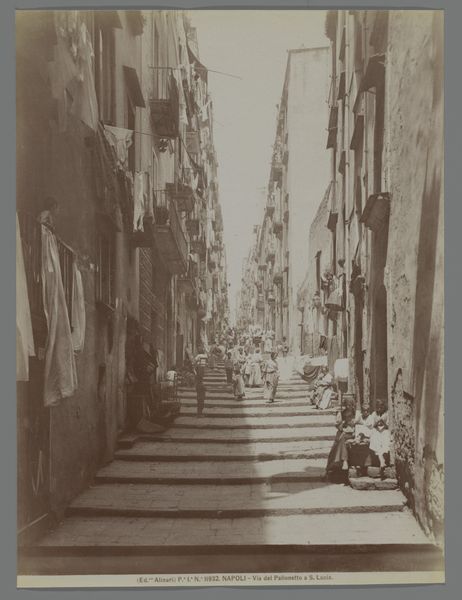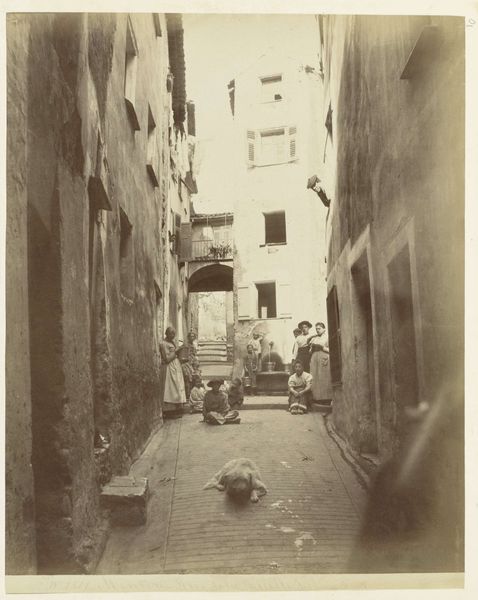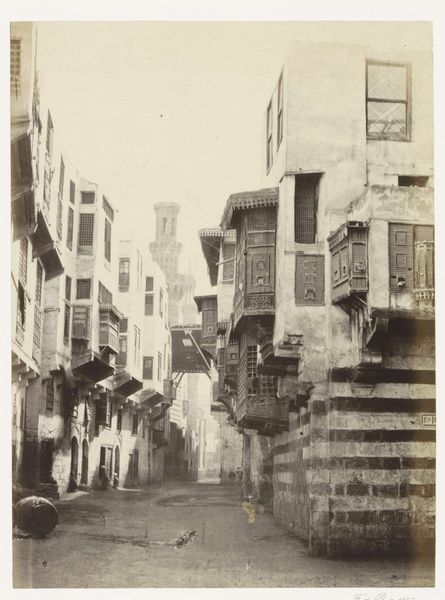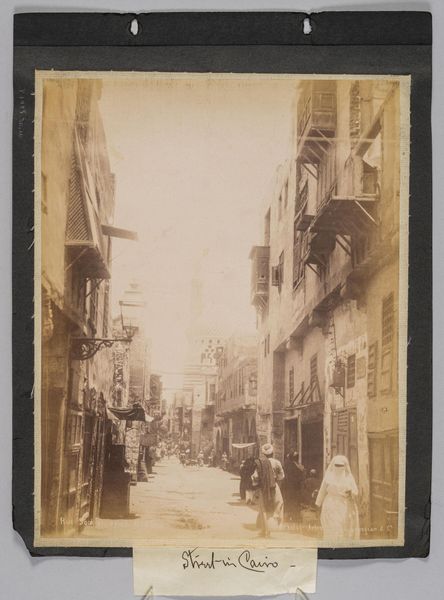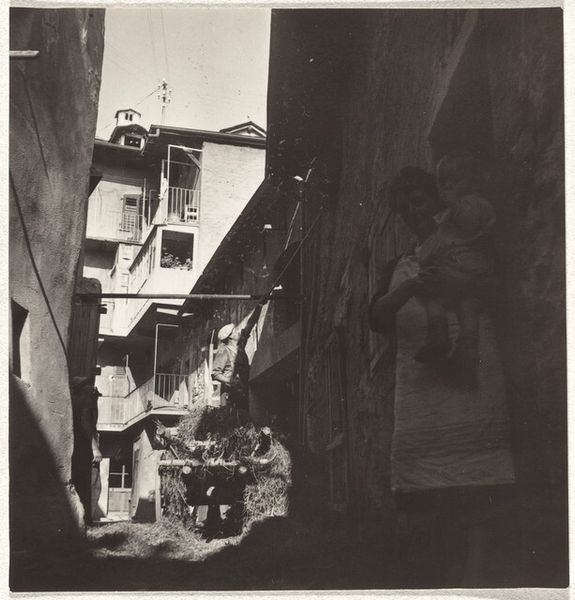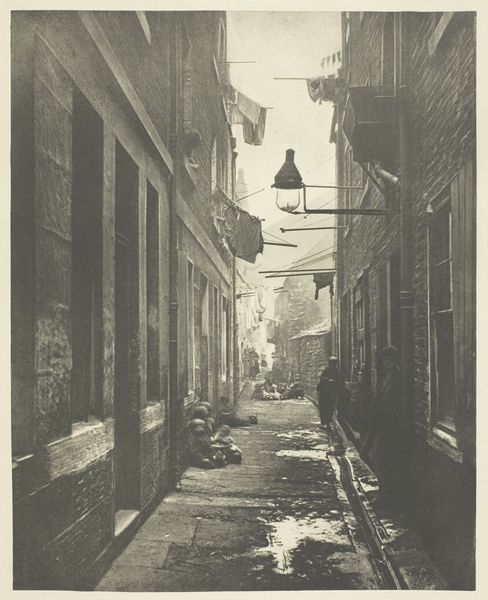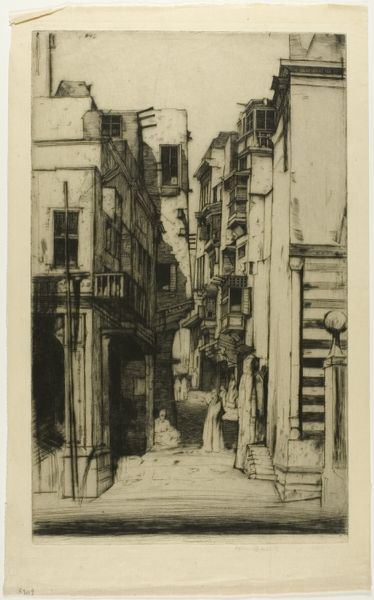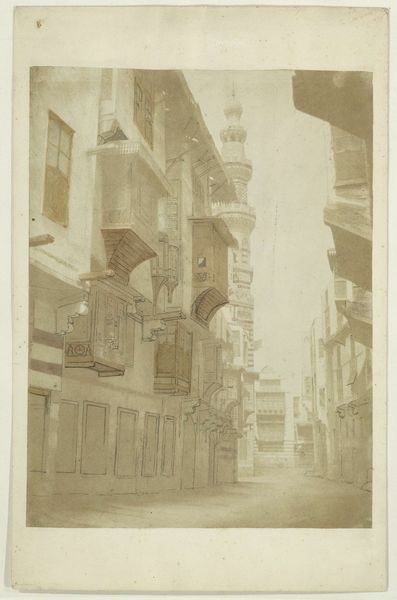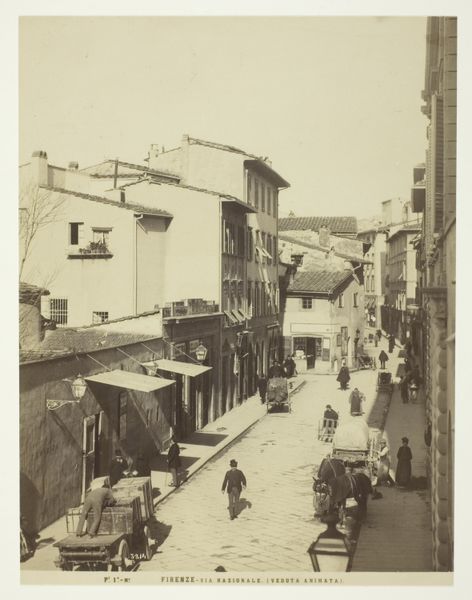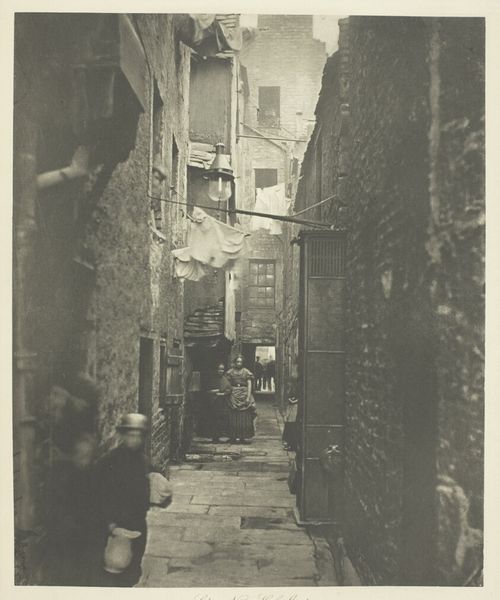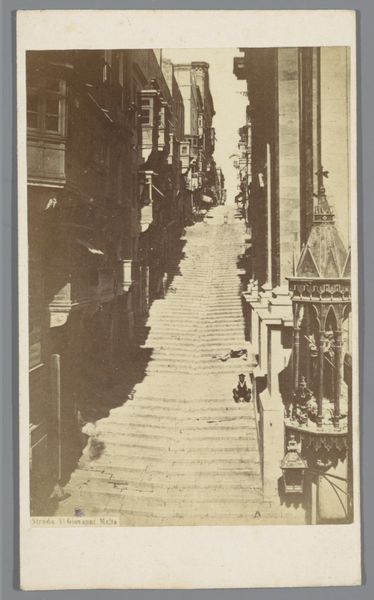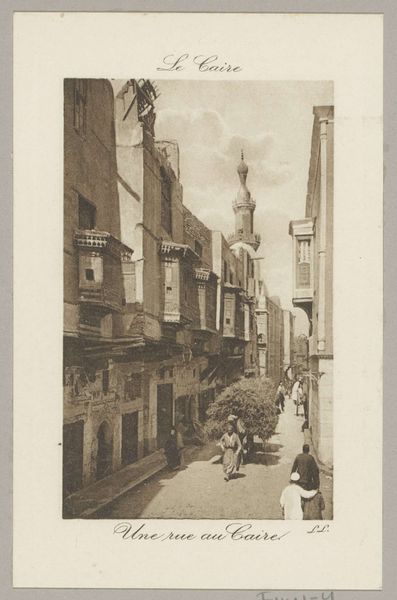
photography, albumen-print
#
street-photography
#
photography
#
orientalism
#
cityscape
#
albumen-print
#
realism
Dimensions: height 252 mm, width 200 mm, height 309 mm, width 507 mm
Copyright: Rijks Museum: Open Domain
Curator: This albumen print, attributed to Giorgio Sommer and taken between 1893 and 1903, is titled "2208 Napoli Pallonetto S. Lucia." Editor: My first impression? Claustrophobia mixed with a vibrant sense of community. All those lines drawing you into the deep perspective of the street—the buildings, the people, the laundry... it's like a stage set. Curator: Absolutely, a stage. I see layers upon layers of lived experience embedded within this singular shot. The photograph serves as a historical document reflecting urban conditions in Naples. Poverty is hinted at by the density and narrowness of the street, with washing strung across, practically a part of the architecture, embodying a specific intersectional space. Editor: And consider how potent white fabric is as a symbol. Innocence, purity… but here, suspended en masse, almost oppressive. What do you make of that interplay of lightness and weight? They create a cultural identity but seem very fragile in its essence, because the life looks like is squeezing every person on it. Curator: It speaks to the resilience, I think, of working-class Neapolitans, their public life made so visible by economic circumstance. Washing becomes both emblem and practical necessity in creating communal boundaries; an argument could be that fabric is literally representing the many class divides across the street, and its precarious situation could collapse at any moment. How does it play with the tropes of orientalism typical of photography from that time? Editor: That’s an astute observation! It’s easy to exoticize poverty. But I notice the way light etches details into everything. Sommer seems as interested in conveying lived reality. The shadows also carry potent symbolism here - one side appears bathed in light versus a shadow-ridden perspective; not everything can emerge. And there's something very revealing about capturing life lived quite literally in the open, the street almost an extension of one’s household, and exposing inequalities, that perhaps a tourist might not experience at all. Curator: Exactly, by positioning this albumen print within its historical setting, we move beyond romanticization to grapple with issues around class, gendered labor represented by garments, poverty tourism. The composition does, though, aestheticize struggle, making sure these spaces of poverty were a romantic commodity to the many European travelers. Editor: For me, the beauty resides in its complicated, deeply layered story, a very strong dialogue between the photographic approach of documentary reportage and constructed idealism. This tension ultimately encapsulates much of our continuous struggle when observing complex social subjects.
Comments
No comments
Be the first to comment and join the conversation on the ultimate creative platform.
